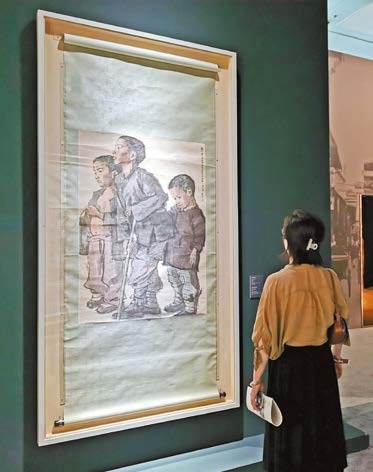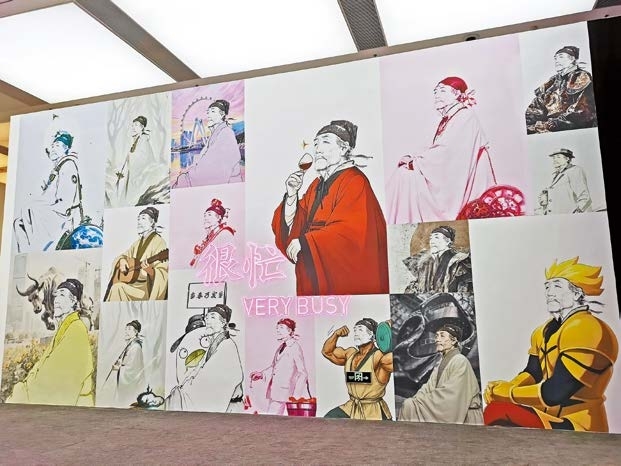

Cao Zhen caozhen0806@126.com BACK in 2012, Chinese netizens went on a creative spree photoshopping a painting of the ancient poet Du Fu from Chinese textbooks, transforming him into a motorcyclist, an athlete, a superhero, and more. This sparked a social media frenzy under the hashtag “Du Fu is busy.” Few realized that the original painting of Du Fu was created by Jiang Zhaohe (1904-1986), a master of Chinese ink painting, in 1959. Today, this artwork is on display alongside Jiang’s other works at his solo exhibition, “The Wild Trail of Mine,” held in Shenzhen. Most of the exhibits are portraits of ordinary people — nameless yet deeply cherished by Jiang. The paintings created during the wartime of the 1930s and 1940s compassionately depict homeless children and families begging on the streets, evoking a strong sense of the country’s suffering. These works established Jiang as a pivotal figure in the development of modern Chinese figure painting. His iconic 27-meter-long painting “Refugees,” created in 1943, is a monumental masterpiece widely regarded as one of the greatest figure paintings of the 20th century. At the exhibition, paintings depicting Chinese people suffering during wartime are displayed in a dimly lit hall. Moving forward, visitors enter a spacious, brightly lit hall showcasing paintings of people in New China after 1949. The lighting thoughtfully echoes the themes and moods of the artworks. In the works created after 1949, Jiang shifted from a harsh exposé of wartime realities to capturing a new chapter in Chinese history. He continued focusing on ordinary people — workers, mothers, children, and ethnic minorities — skillfully portraying the evolving contours of their lives and spirits amid peace and hope. Jiang once said that the portraits he painted mirror social realities as well as his own emotions. They reveal less about the subject’s state of mind and more about the thoughts Jiang himself carried within. “Throughout the decades, the essence of Jiang’s artistic vision never wavered: a commitment to the dignity of individual life and a profound belief in the power of human emotion. That enduring constancy — like a quiet flame in the wind or a compass in the dark — guided Jiang through the long, thorn-strewn path of his artistic journey,” curator Zheng Shiru remarked. The exhibition also features Jiang’s paintings of ancient figures such as poets Du Fu, Li Bai, Li Qingzhao, and others. Compared to his depictions of contemporary people, these paintings of historical figures gave him greater freedom for personal reflection and technical mastery to seamlessly converge. A dedicated section highlights Jiang’s contributions to fine art education, displaying sketches and archival materials. As a professor at the Central Academy of Fine Arts, Jiang has influenced generations of painters, continuing to shape Chinese art education today. Dates: Through Oct. 21 Venue: Shenzhen Museum of Contemporary Art and Urban Planning, Futian District (深圳市当代艺术与城市规划馆) Metro: Line 3 or 4 to Children’s Palace Station (少年宫站), Exit A2 | 
